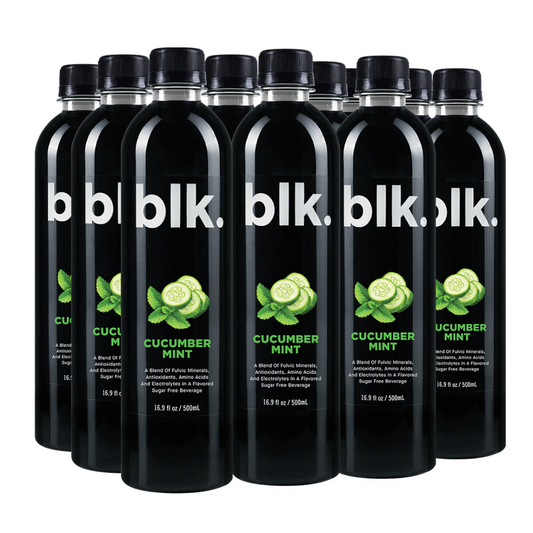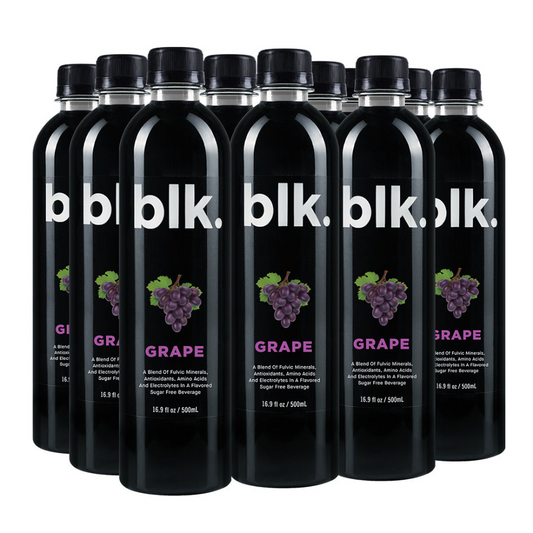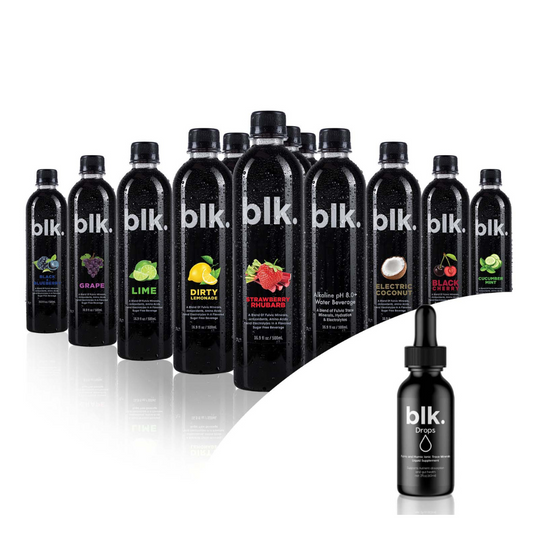
Combining Whey Protein and Progressive Overload for Plateaus
This Guide Seeks to Answer:
- How combining whey protein and progressive overload can help overcome plateaus
- The science behind progressive overload and whey protein
- Best practices for progressive overload
- How whey protein and progressive overload work together
Plateauing can be frustrating. In the context of fitness and exercise, plateauing is a phase when you experience little to no progress in your performance, strength, or muscle gains despite putting in all your efforts. This can be because of overtraining, inadequate nutrition, lack of sleep, or insufficient variety in workout routines. Combining progressive overload and whey protein can help break through plateaus.
Athletes, bodybuilders, fitness enthusiasts, and people who train regularly break the plateau by altering their strength training routines by increasing the weight, the number of repetitions, or the frequency of their training in a process known as progressive overload. Progressive overload also applies to exercises such as running, jogging, and any other cardiovascular endurance activities you may think of. However, do you understand the science behind it? In a nutshell, progressive overload helps overcome plateaus, which we will cover later in this article.
Whey protein, which will significantly contribute to this discussion, is a complete protein obtained from whey, the liquid left-over during cheese formation. It contains all the essential amino acids that can't be synthesized by the body, making it an excellent dietary and gym supplement. It's relevant to our discussion because combining progressive overload with whey protein can help overcome plateaus in muscle growth. Let's find out more!
The Science Behind Progressive Overload
What is Progressive Overload?
Progressive overload is the alteration of a workout routine through a controlled increase in weight, number of repetitions, or frequency. It helps athletes, bodybuilders, and gym goers to challenge their bodies and strengthen their musculoskeletal systems.
How Does Progressive Overload Work?
By gradually increasing resistance, workout frequency or the number of sets and repetitions, progressive overload ensures that you challenge your body, creating a more robust musculoskeletal system over time.
The Importance of Progressive Overload for Muscle Growth
Progressive overload is much required in strength training and muscle growth. By gradually increasing the stress placed on the muscles during exercise, we force them to adapt and grow stronger over time.
- Avoiding Plateaus: A fitness or workout plateau occurs when the body adjusts to the demands of a workout routine. People who reach a workout plateau rarely see any results as progress decreases during this stage. Progressive overload creates a challenging and dynamic routine, preventing the body from getting comfortable.
- Keeping Muscles Stronger: Progressive overload stresses the muscles, making them grow and stay stronger over time.
- Faster Gains: Progressive overload prevents the body from adjusting to a particular routine, an occurrence that can lead to slow or no progress. It, therefore, sets you up for faster gains.
- Increases Pump: Progressive overload increases muscle contraction by exposing them to increased stress, forcing the body to release more blood to the muscles for an increased pump.
Three Principles of Progressive Overload
Progressive overload is premised on the following principles:
- Maintaining Good Form: Anyone who works out regularly definitely understands the importance of maintaining proper lifting form during strength or endurance exercises. A good form or posture increases performance, lowers injury risk, and promotes efficient movement. Consequently, before adding weights or increasing the number of reps or sets, ensure you maintain the proper lifting form required for a given weight category.
- Logging Workouts: It's important to keep track of your workouts and accurately record all the weights, sets, or reps done weekly for proper progressive overload. Only by logging your progress will you know what to alter when the time to switch up your workout comes.
- Only Make One Change at a Time: Don’t overdo it. Gradually add the number of reps or sets in your workout to increase resistance and vice versa, as you don't want to subject your body to too much stress.
The Science Behind Whey Protein
Whey protein is a milk-based protein derived from whey. It has a range of amino acids that can be quickly absorbed into the blood. Studies have shown that amino acids can help people gain muscle, increase strength and lose body fats if used correctly.
How Does Whey Protein Work?
Whey protein supplies the body with essential amino acids, such as BCAAs, which promote muscle growth. It is also a fast-acting protein since it is quickly broken down and absorbed into the bloodstream, supplying the body with an almost-instant boost of nutrients.
The Importance of Whey Protein for Muscle Growth
Increases Muscle Mass and Strength
Whey protein supplementation increases the body's protein intake. A scientific study conducted in 2015 concluded that with adequate training stimulus, protein supplementation could enhance muscle mass and strength.
Promotes Growth of Lean Tissue
Studies have shown that rich protein sources such as whey protein can help people gain lean mass.
Improves Protein Synthesis for the Muscles
Whey protein consumption increases leucine, a branched-chain amino acid that directly and indirectly stimulates protein synthesis via MTOR.
Combining Progressive Overload and Whey Protein
How Progressive Overload and Whey Protein Work Together
Progressive overload requires engaging in more challenging workouts over time and putting more stress on the muscles for increased gains. Whey protein has several branched-chain amino acids, such as leucine, that promote muscle growth when combined with strength training through protein synthesis. Progressively overloading and taking whey protein, therefore, complement one another, provided that strength training is involved.
The Benefits of Combining Progressive Overload and Whey Protein
- Added Strength: Whey protein is generally used by athletes and people who want to build muscles because of its strength-boosting ability, leading to better workout performance. Progressive overload mainly involves increasing the weight or number of reps, which calls for additional strength supplied from whey protein supplementation.
- Increased Endurance: One of the ways of progressively overloading is extending the duration of the workout. If combined with whey protein, the amino acids present can be metabolized for increased endurance which happens when the muscle glycogen reserves are consumed to provide more energy.
- Faster Recovery: Progressive overload, puts lots of stress on muscles, and whey protein can lead to faster recovery thanks to the high levels of BCAAs in whey protein that promote protein synthesis. Faster recovery assists in adding more weight frequently.
Overcoming Plateaus With Progressive Overload and Whey Protein
How Progressive Overload and Whey Protein Can Help Overcome Plateaus
Added strength, increased endurance and faster recovery benefits gained by combining whey protein and progressive overload can help you overcome plateaus. Whey protein is an excellent source of protein. Its consumption increases the body's overall protein intake. When combined with resistance exercise, increased protein intake leads to more strength and greater muscle gains through progressive overload. To overcome the plateau phase, let's first look at the common causes of plateaus in muscle growth.
Common Causes of Plateaus in Muscle Growth
- Overtraining Your Body: People who overtrain do not generally give their bodies enough time to recover, significantly hindering results, especially if the sessions are not spaced out well. Overtraining syndrome, or OTS, also lowers fitness levels and harms performance.
- Less Recovery Time: Failing to give your muscles enough time to recover can negatively impact performance or lead to overtraining syndrome. The muscles can also feel swollen, exhausted, or inflamed, leading to no visible gains.
- Working Out Too Little: To experience muscle growth or any significant gains, the muscles must be gradually subjected to additional stress, which cannot happen when you undertrain. Working out too little makes your body comfortable and may even erase some of the gains you had made earlier.
- Bad Workout Routines: Bad workout routines include sticking to one resistance training routine for far too long, which can expose you to overtraining, one of the common causes of plateaus.
Tips for Breaking Through Plateaus With Progressive Overload and Whey Protein
Here are a few tips that can help you break through a workout or fitness plateau with progressive overload and whey protein:
- Consider a Routine Switch Up: Switching up workouts is one of the most effective ways of overcoming a fitness plateau. You can begin by changing the intensity and duration of your workout to help you boost your endurance. Other means of making your workout more intense include lifting heavier weights, limiting rest periods, and adding more repetition.
- Try Periodization Training: Periodization training is an excellent way to prevent overtraining, enhance performance and improve progress. You can use training cycles and alter variables or do fewer reps with heavier weights. Other options include doing a drop set while lifting weights for improved muscle growth and endurance and incorporating speed work, hill training, and long-distance workouts if you are a runner or cyclist.
- Consider Getting a Professional Trainer: You should also consider working with a professional trainer. These professionals are experienced in making people push past their limits thanks to customized training programs. You will get regular feedback, insights, motivation, engagement, and fresh ideas. Progressive overload also requires maintaining an excellent lifting form, which your trainer can help you achieve.
- Challenge Yourself: You need to challenge yourself by trying something new. Join a new sport or try a new gym machine, provided you get to disrupt your daily routine. You can also consider participating in group classes or a range of sports.
Best Practices for Implementing Progressive Overload and Whey Protein Into Your Workout Routine
Proper Form and Technique for Progressive Overload Exercises
Ensure that you can achieve and maintain proper form before increasing resistance. Remember, poor form can lead to injuries, keeping you grounded for some time.
Increasing Weight
A weight increase subjects the muscles to increased stress, making them disintegrate, rebuild and become stronger. The simplest way to increase resistance is gradually increasing the weight after mastering an exercise. Doing 10-12 repetitions without struggling should signal you to try a new weight category.
Increasing the Repetitions
An increase in repetitions works similarly to an increase in resistance. It puts more stress on the muscles, strengthening them over time.
Completing More Sets When You Workout
Completing more sets during your workout lengthens your workout time a practice that applies to both strength and cardiovascular endurance training. Consider doing a higher number of reps using a relatively lighter weight during strength training and then gradually increasing the repetitions after mastering the exercise. For cardiovascular endurance, apply this principle by gradually increasing the length of your cardio exercise sessions.
Resting Correctly
Resting is just as important as working out and must therefore be prioritized. Progressive overload subjects the muscles to lots of pressure which may lead to tears or muscle damage. It's therefore important to give your muscles some time to recover by getting enough rest and eating high-protein diets and supplements. Also, remember to get adequate sleep.
Adding Proper Dose of Whey Protein
Remember to take 1-2 scoops of whey protein within 2 hours after your workout to promote faster muscle recovery.
Changing Your Workout Routine and How Frequently You Train
Changing your workout routine and the frequency of your training prevents your body from adjusting to one routine and getting comfortable, helping you avoid a fitness plateau that can level out your progress.
Changing Your Workout Intensity
Intensity can also be referred to as tempo. You can alter your workout's intensity by maintaining a quick pace or minimizing rest times. Use a lighter weight for the best results if you choose to increase your pace.
Conclusion
Progressive overload is one of the most effective ways of overcoming a fitness plateau. It allows you to challenge and drive your body out of its comfort zone, which you must do for more gains. Remember to combine progressive overload with whey protein for increased strength and better recovery, and, if possible, get a fitness trainer.
Frequently Asked Questions
-
How Can You Ensure Progressive Overload?
-
What Will Happen if I Do Not Progressively Overload?
-
How Frequently Should I Progressively Overload?
-
Can You Progressively Overload With the Same Weights?
-
Can I Progressively Overload on a Calorie Deficit?




